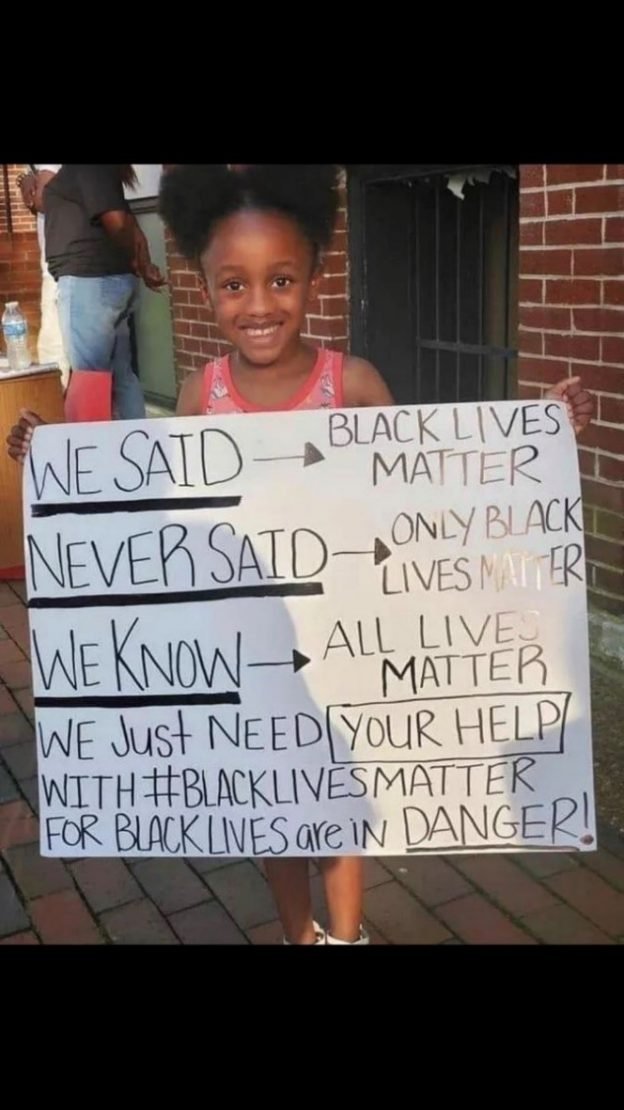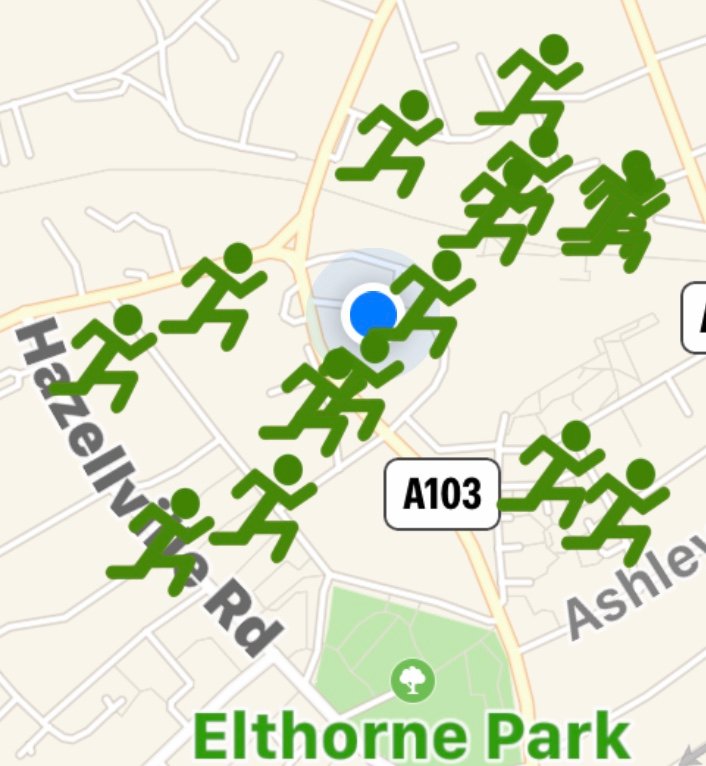Reader beware – this is an open letter about race on both sides of the Atlantic. The truths expressed here make for uncomfortable reading, but I encourage you to read on: the time for sticking heads in the sand has long since passed.

We are all now familiar with the ongoing social unrest in the US and around the world.
Disgust and disbelief turned into anger, anger into protest, and peaceful protest morphed into disruptive civil disobedience. All in response to George Floyd’s killing in Minnesota on 25 May (and Amy Cooper’s abhorrent abuse of racial privilege in New York, and the modern-day lynching of Ahmaud Arbery in Georgia, and [insert injustice of the reader’s choice…]).
For some, the knee-jerk reaction has been to ignore the peaceful protests and shift straight into condemnation of the mass disruption.
This open letter is addressed to those who continue to query why black people in the US/UK/elsewhere (and – very welcome – allies of all racial persuasions) may feel compelled to take to the streets and be (non-violently) disruptive right now; an effort to engage – respectfully and apolitically – with the ‘But why are they being so disruptive?’ brigade.
The short answer is that such disruption is the nature of protests, of civil disobedience. The very purpose is to upend the established, oppressive order; to effect change within the system being protested against.
That is said not to condone violence, but rather to justify (non-violent) acts of civil disobedience and disruption.
The factors which open the floodgates to waves of protestors, which cause them to abandon social norms and speak out, emanate from the perception that the status quo is in some way broken. That the way things have been is oppressive and must change. So protestors seek to disrupt; not with wanton abandon, nor with glee, but out of desperation to have voices heard which have for too long been passively forgotten or actively silenced.
And yes that sometimes spills over into disruption, into social unrest.
This is unfortunate, but often inevitable, and is the essence of taking to the streets to effect change. Keyboard warriors (this one included) can be ignored out of hand; marching masses cannot.
To paraphrase the stand-up comedian Kae Kurd (because dark humour gets us through dark times): ‘If the person you’re protesting against is happy with your means of protest…then that’s not really a protest, is it?’. An idea echoed by another comedian/political commentator, Trevor Noah, host of the Daily Show: ‘There is no “right way” [for the Have Nots] to protest because that’s what protest is’.
Such is the nature of every truly seismic act of civil disobedience, of every successful movement for the advancement of the underprivileged that there ever has been or ever will be.
From the 14th century English Peasants’ Revolt, to the Suffragettes sticking it to the patriarchy in the early 20th, to Martin Luther King proclaiming ‘I have a Dream’ in 1963, the story is the same. The Haves disregard the Have Nots until the downtrodden cause a sufficient nuisance that they can no longer be ignored.
So when a vocal minority of Haves chastise the Have Nots by saying ‘you’re being far too disruptive’, the response from protestors should simply be ‘thank you…that’s the point’.
(And for those who mistakenly believe ‘but it’s different in Britain’, remember that for better or worse what happens in the USA matters in every corner of the world in which American culture permeates. Regardless of whether we are speaking of economic shocks or social attitudes, it remains a truth universally acknowledged that ‘When America sneezes, the World catches a cold’.)
The essence of every well-functioning society is (enforced) consent to the system for the mutual benefit of all. Put philosophically, it’s the Social Contract. In today’s America we see that the Social Contract has been breached so flagrantly and so systemically for so long that portions of the body charged with policing it are now intrinsically part of the problem (but only portions; it’s important to remind ourselves that most police officers are fundamentally good people).
So the time has come to seek: a) justice (the belated charging of the other 3 George Floyd officers was a good start), and b) tangible change (at the very least, compulsory bodycams for all officers). And perhaps to seek change by means other than working within the formal institutions of the system (albeit non-violently). To March on Washington and Westminster, not to sit still and wait for yet another name to be added to the Wall of Unarmed Victims.
Perhaps more glaringly, that blight of institutional racism has become so endemic that the Amy Coopers of this world feel entitled to weaponise the To Kill a Mockingbird-style shameful truth that a white woman’s word will – no matter the circumstances – count for far more than that of a black man’s (unless someone happens to be filming). In the absence of indisputable video evidence clearing his name, I have no doubt that at this very moment there would be a man awaiting trial for the heinous ‘crime’ of Bird Watching While Black.
Bringing up the Amy Cooper example is in no way intended to diminish the suffering and anguish of the last moments of George Floyd’s life; a man has been murdered and nothing can return him to his family.
Rather, the Cooper episode highlights the uncomfortable fact that the minority of Haves who were so quick to jump on the condemnation bandwagon are – silently – well aware of the (unasked for, but nevertheless very real) privilege that they share with Ms Cooper. These people are not blind. They recognise that certain groups are marginalised and face prejudice; and yet these same people appear to expect those oppressed groups to simply weep a little, move on, and pretend that they See No Evil and Hear No Evil.
This inconsistency between outward expression of condemnation versus inward recognition of oppression faced by others was depressingly demonstrated by this YouTube clip where renowned anti-racism activist Jane Elliott (famed for her 1968 ‘Blue Eyes-Brown Eyes‘ classroom experiment) asked a predominantly white American audience in 1996: ‘I want every white person in this room who would be happy to…receive the same treatment as our black citizens do in this society…please stand’. Unsurprisingly, not one of those Americans stood (and I doubt any Brits would stand either).
Jane Elliott’s response to this inconvenient truth was incisive: ‘That says very plainly that you know what’s happening, you know you don’t want it for you. I want to know why you’re so willing to…allow it to happen for others.’
We are all fortunate that the world has – to a significant extent – moved on since those 1968 and 1996 video clips. However, the fact remains that no white American in 2020, nor in 1776, indeed no white American who has read a newspaper at any point in the last 250 years would have stood up in response to Jane Elliott’s question.
That is why, regardless of race, colour, or creed, we who believe in equality must continue to make our voices heard around the world in solidarity with the American marching masses and donate to equal rights causes where we can.
That is why we must continue to protest. That is why we must continue to disrupt.
Mbombo Kaoma, a black British lawyer at Hogan Lovells International LLP, who hopes that one day open letters such as this one will no longer be necessary, that they will have become mere footnotes to history.
NOTES
- This open letter was first published in the Law Society Gazette here , and republished on this site with kind permission of the author.





























